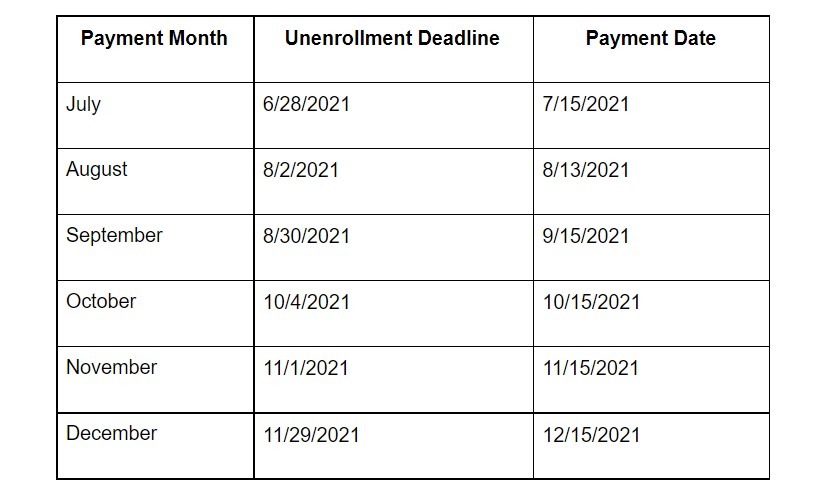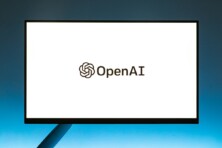There are a few things you should know about that

7 things you need to know about expanded federal child tax credit. Source: pexels.com
Although the US government didn’t officially announce the distribution of a fourth stimulus batch, for some taxpayers more aid payments are still to come. It’s possible due to the federal child tax credit that was expanded this year.
1. What is expanded child credit?
Child tax credit is nothing new. Millions of Americans receive this rebate each year so that they can afford raising children. This type of tax break is designed to offset the costs associated with caring for a child or dependent with disabilities. In general, you can claim the credit regardless of your income, though it gets smaller with higher income levels. Typically, this tax credit applies to working parents who pay someone to take care of their children while they work (day care workers, babysitters, etc). However, this year, low-income families who don’t typically file tax returns can receive some aid as well. Even if you have $0 in income, you can receive advance Child Tax Credit payments if you are eligible.
Advance Child Tax Credit payments are early payments from the IRS of 50% of the estimated amount of the Child Tax Credit that you may properly claim on your 2021 tax return during the 2022 tax filing season. The other half will come in April 2022. For tax year 2021, a qualifying child is an individual who does not turn 18 before January 1, 2022.
2. Eligibility
Some families who have children born before 2021 can apply for an expanded child credit. The child must be properly claimed as the taxpayer’s dependent. It can be the taxpayer’s son, daughter, stepchild, eligible foster child, brother, sister, stepbrother, stepsister, half-brother, half-sister, or a descendant of any of them (for example, a grandchild, niece, or nephew) who has lived with the taxpayer for more than one half of the tax year. If the child’s parents are separated or divorced, only the parent who has primary custody can claim the child care tax credit.
To receive this aid, you must have lived in the US for at least half of the year. If you are married, your spouse is supposed to have resided in the US for a half of the year as well. Your main home may be your house, apartment, mobile home, shelter, temporary lodging, or other location and doesn’t need to be the same physical location throughout the taxable year. You don’t need a permanent address to get these payments, which opens up new opportunities for additional low-income categories of the population. If you are temporarily away from your main home because of illness, education, business, vacation, or military service, you are generally treated as living in your main home.
As a citizen, you must not be required to file a 2020 tax return, didn’t file one and don’t plan to. You — and your spouse, if married filing a joint return — must have a Social Security number (SSN) or an IRS Individual Taxpayer Identification Number (ITIN). Make sure you have used your correct SSN or ITIN when you filed a 2020 tax return or 2019 tax return (including when you entered information into the Non-Filer tool on IRS.gov in 2020).
To see if you’re eligible for advance payments, use the Advance Child Tax Credit Eligibility Assistant.
3. Schedule
The first advance payment is scheduled on July 15, 2021. After that, payments will be disbursed on a monthly basis through December 2021. The last payment will appear in April 2022. You will claim that other half when you file your 2021 income tax return. The due date is usually April 15 unless it gets extended by the government.
4. Amount
The enhanced credit gives families up to $3,600 for each child under 6 and $3,000 for those aged 6-18. This increases the existing credit of up to $2,000 per child under age 17. The expanded credit for non-filers will be available for single taxpayers with annual incomes up to $75,000, heads of households earning $112,500, and joint filers making up to $150,000 a year.
The amount of acceptable expenses for working parents who claim the credit for money they paid for child care increases from $3,000 to $8,000 for one qualifying person and from $6,000 to $16,000 for two or more qualifying individuals. The percentage of qualifying expenses eligible for the credit increases from 35% to 50%. The beginning of the reduction of the credit is increased from $15,000 to $125,000 of adjusted gross income (AGI).
Advance Child Tax Credit payments are not considered to be any type of income and will not be reported as income for tax purposes when you file the 2021 tax return. This tax credit will be fully refundable.
5. Opting out
Although receiving a child tax credit might be a blessing for some American families, you may also decide to opt out from the Advance Child Tax Credit for a few reasons.
For instance, you understand that you won’t have entitled children in the 2021 tax year and don’t want to repay the IRS next year. The total amount of advance payments you receive during 2021 is based on the IRS’s estimate of your 2021 Child Tax Credit. If you receive advance Child Tax Credit payments for two qualifying children properly claimed on your 2020 tax return, the advance Child Tax Credit payments that you received based on those children are added to your 2021 income tax automatically, unless you qualify for repayment protection. If the children turn 18 before January 1, 2022, they won’t qualify for the Child Tax Credit 2021 and you’ll have to pay back the excess funds you’ve received from the government.
Another case is that your employer may provide a way to pay for child care with “pre-tax” dollars. Some amount of money may be taken out of your paycheck before taxes are calculated. This way, the amount you save in taxes may be greater than what you get with the credit.
Finally, you can simply prefer to get one payment in 2022, instead of monthly batches. To stop advance checks, the IRS says you must unenroll ahead of the payment due date.
The deadlines are as follows:
6. How to register
The IRS launched a Child Tax Credit Update Portal (CTC UP), which will allow you to update information about your dependent children, as well as your bank account information.
If you regularly pay taxes, you must be already registered with the IRS and have filed your 2019 and 2020 taxes. In this case, you will receive Child Tax Credit advance payments automatically without needing to take any additional action.
If the IRS has not processed your 2020 tax return as of the payment determination date, it will determine the amount of an advance Child Tax Credit payment based on information shown on your 2019 tax return. If your 2019 tax return included no qualifying children, or showed a large amount of income that greatly differed from the 2020 situation, you should immediately file a 2020 tax return so that the information for the Child Tax Credit gets updated. The payment will start in the month after your 2020 tax return is processed.
If you don’t typically pay taxes, you should use a non-filer registration tool to sign up. The fastest way to get advance payments is by direct deposit. You can use a bank account, prepaid debit card, or mobile app for your direct deposit and will need to provide routing and account numbers. If you would like to have your payment direct deposited, many financial institutions will help you open a low-cost, or no-cost bank account.
7. Avoid scams
Since the advent of first stimulus checks and new federal financial initiatives, scammers have become extremely active to trick people out of their aid money. Remember that the IRS doesn’t initiate contact by email, text messages, or social media channels to request personal or financial information – even information related to advance Child Tax Credit payments. Also, watch out for emails with attachments or links claiming to have special information about advance Child Tax Credit payments or refunds of the Child Tax Credit.
SEE ALSO:










